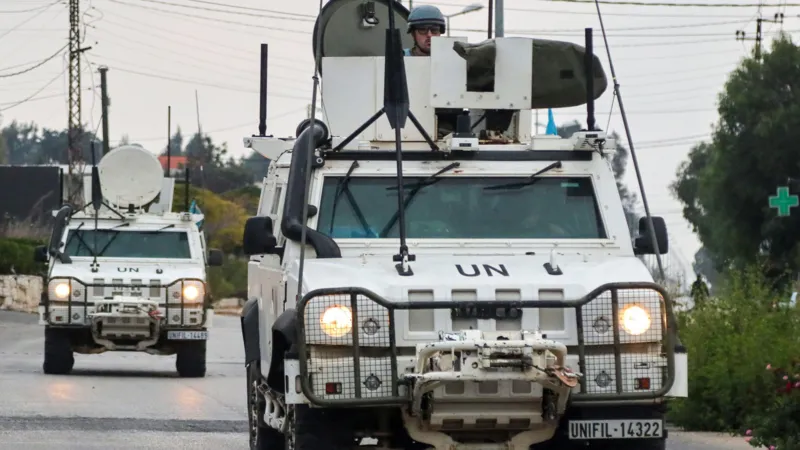Cairo masterplan threatens ancient City of the Dead
In the early morning haze, women dressed in black and men with grim expressions gather in Cairo's centuries-old Sayyida Nafisa cemetery.

But they are not here to bury their relatives. They are here to exhume them.
"This is a double trauma," says Iman, sobbing as she directs proceedings.
"First my mother - my mentor - passed away last year. Now I am digging up her fresh body and my grandparents' remains, putting them in sacks, and driving away to rebury them in new graves in the desert."
Iman's story is not unusual. In the past two years, the locations of several thousand graves in Historic Cairo, a Unesco World Heritage Site, have been razed. They include some in the famous City of the Dead.
The Egyptian government is clearing a wide area to make way for new main roads and flyover bridges, which it says will improve traffic flow in the sprawling, congested megacity, home to about 20 million people.
These will also connect the heart of the capital with a new administrative one being built 45km (28 miles) to the east, a flagship mega-project costing billions of dollars.
The developments are being pitched as part of an effort to modernise Egypt. Since President Abdul Fattah al-Sisi came to power in 2014, official figures show a total of 7,000km (4,350 miles) of roads and some 900 bridges and tunnels have been built across the country, with military contractors carrying out much of the work.
The authorities insist that none of the many registered monuments in this old part of Cairo, some dating back to the Arab Conquests in the 7th Century, are being damaged and that due respect is being shown to the most important tombs.
Map showing part of Cairo’s City of the Dead and the locations of the Sayyida Nafisa and Imam Shafei cemeteries, and where they are in relation to the new capital
"We can't do anything to harm the graves of people we admire or against monumental areas. We build bridges to avoid this," President Sisi has said. "We should not give an opening to those who want to tarnish our efforts."
His officials say that the affected gravesites are mostly from the past century and that compensation is being given.
However, there has been a public outcry over the loss of valuable architecture and a unique cultural heritage in six historic cemeteries where Egypt's notables have long been buried, often in fancy marble tombs engraved with Arabic calligraphy.
Royals, renowned Islamic scholars, poets, intellectuals and national heroes have not been left to rest in peace.
With his white hair and professional camera, Dr Mostafa El-Sadek makes for a distinctive figure searching the rubble of the demolished graveyards with young volunteers. He is a distinguished obstetrician and university professor who has turned tomb raider.
"I'm so sorry to see the graves of Historic Cairo being removed. We can learn our history from graveyards," says Dr Sadek, who attempts to salvage headstones and other artefacts. "This is priceless. I believe these treasures should be saved."
He recounts how this month he caught a glimpse of a stone slab built into a demolished wall containing engravings in Kufic script, an early style of Arabic calligraphy, while searching in Imam Shafei cemetery, across the street from Sayyida Nafisa.
His group carefully removed the tombstone and found it had an inscription for a woman called Umamah, and dated back to the 9th Century.
"The stone was looking at me and I was looking at it. It wanted me to set it free from the wall!" says Dr Sadek fancifully. The tombstone has now been handed over to the ministry of tourism and antiquities in the hope it will go on display in a museum.
Under successive caliphates and Muslim dynasties, the dead of Cairo have been buried in this part of the city, beneath the low range of the Muqattam Hills.
In the past, each well-off family had its own walled plot with a mausoleum set in a leafy garden. Outbuildings were sometimes added to accommodate visiting relatives and were otherwise home to caretakers.
With morticians and gravediggers and their families, and later, tens of thousands of poor Egyptians, coming to live among the tombs, the City of the Dead in particular, came to house an unusual community, which is threatened by the construction.
Some residents have already taken up government offers to move away to rented apartments built on the outskirts of Cairo.
"Unfortunately, Cairo will lose a very precious heritage," says Galila el-Kadi, an architect who has studied the City of the Dead and its residents since the early 1980s, as well as the other historic cemeteries.
She does not buy the arguments by government ministries about a new masterplan for Cairo.
"They don't know what is the meaning of heritage, what is the meaning of history," she complains. "This is an environment that all past rulers have conserved in ancient times and modern times too."
Property developers have long eyed this prime real estate and, over the years, Ms Kadi has used her research to organise conferences, lobby ministers and set up petitions to try to protect the cemeteries.
This time, even an approach to Unesco has been to no avail, although the agency has expressed concern that the demolitions of tombs and road construction could have "a major impact on the historic urban fabric" of the area.
The remains of Queen Farida - the wife of King Farouk I, who was overthrown in a 1952 coup - were moved to a mosque after her tomb was destroyed.
Also pulled down was the grave of Abdullah Zuhdi, the 19th Century calligrapher whose exquisite works adorn Islam's two most revered mosques in Mecca and Medina.
There have been some limited victories, such as a recent campaign to save the tomb of the great 20th Century Egyptian novelist and intellectual, Taha Hussein, after his grave was marked with a red "x" for demolition.
However, preservationists point out that the integrity of the area is being lost because remaining tombs and monuments will sit alone below or surrounded by new roads.
"They are creating isolated islands, separated from each other," Ms Kadi says.
Now, she is devoting her efforts to building up a database of photographs and maps of the area.
"It's a very bad feeling, but me and my team, and all people who care about the heritage, all that we can do now is preserve the memory of these places," she goes on. "That's the only way to transmit it to future generations."
Back at Sayyida Nafisa cemetery, Iman remains distraught as she disinters her relatives.
She describes how her family was sent a letter asking them to act quickly after the graves were listed for demolition.
"This is a desecration of the dead. I used to find peace of mind visiting my mum buried here with my grandparents," she says. "When I was sad, I'd come here and talk to her. Plus it was my mum's final wish to be buried here with her mum and dad."
The latest round of construction affects 2,600 private graves. Besides the emotional strain, many families complain that the compensation that they are being given does not match the financial costs.
"My grandfather chose to be buried next to this Muslim saint and paid $100,000 [£80,700] in 2019 for this private burial space by Sayyida Nafisa Mosque," says a woman at another graveside, who asks for her name not to be used.
Her family has been given a new 40 sq m (431 sq ft) burial place of far less value, about 55km outside Cairo.
She says that her feelings of sorrow and bitterness about what is happening to her grandfather's plot are overlaid with despair at the scale of the destruction.
"These graveyards are just so rich in architecture and art," she adds, gesturing around her. "The government should not be demolishing them. It should be turning them into open air museums."
-bbc







